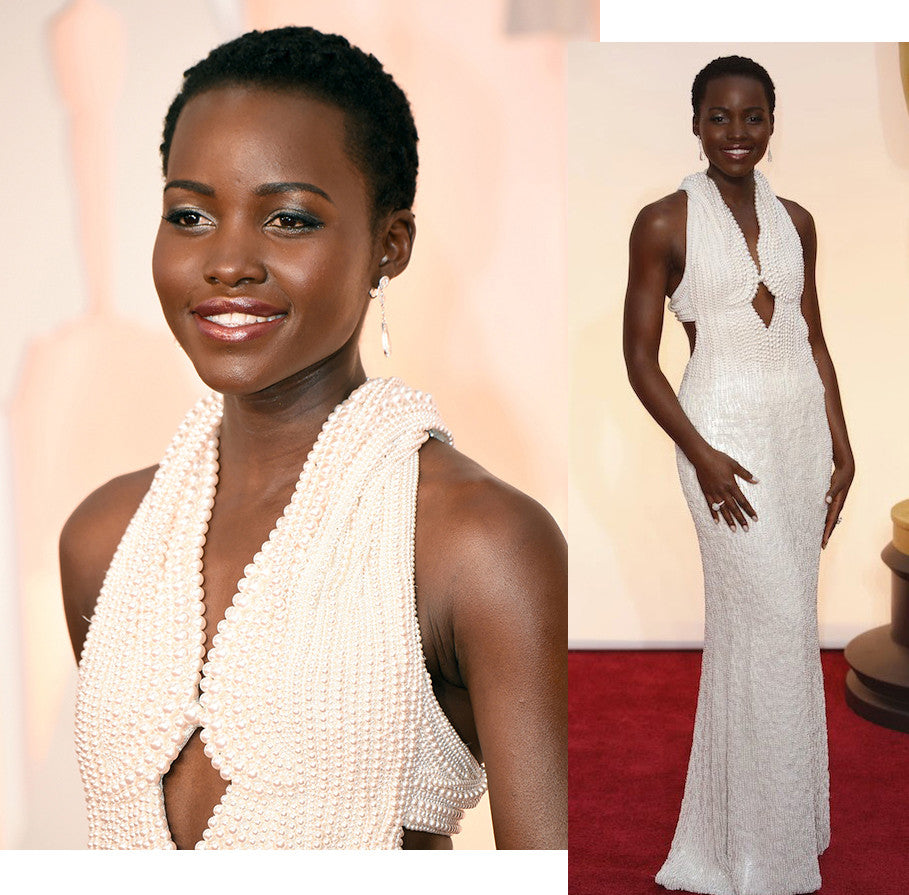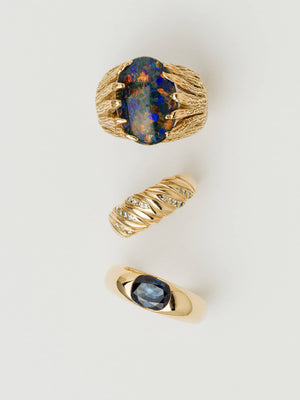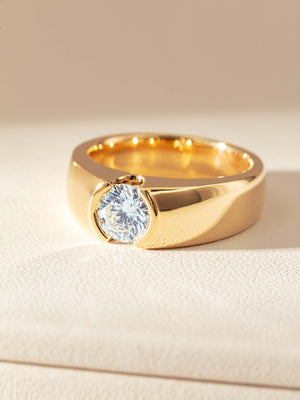You’ve probably seen the amazing dress worn by Oscar-winning actress Lupita Nyong’o at last month’s Academy Awards, and maybe heard the controversary surrounding it, but if you haven’t here’s what you’ve missed…
Lupita rocked up to the Academy Awards in a show-stopping halter style dress that was dripping in more than 6,000 pearls! Designed by Calvin Klein’s Francisco Costa, this dress is said to be worth $150,000 USD. Costa was quoted as saying ‘We looked at a variety of different pearls – South Sea, iridescent and natural – and decided that the natural pearls looked the most beautiful’.
Seems like these beautiful pearls caught someone else’s attention as the dress was stolen from Lupita’s hotel room shortly after the Oscars! In a bizarre twist, the dress was discovered days later, in another room of the hotel. It’s since been reported that the thief returned the dress after learning that the pearls were fake!
Certainly sounds like there’s a bit of confusion there. While Lupita’s dress and what actually happened might remain a mystery, one thing we can set the record straight on is pearls – natural pearls, cultured pearls, fake pearls and the difference between them.
Let’s start with what a pearl is. A pearl is formed when a tiny irritant (like a grain of sand) finds it’s way into a mollusk. Trying to protect itself, the mollusk secretes nacre to cover the irritant. The layers of nacre build up and then a pearl is formed. This process happening randomly in nature is rare, therefore making natural pearls very expensive. To give you an idea of just how expensive natural pearls are – in 1917 Pierre Cartier traded a double strand of natural pearls for a mansion on Fifth Avenue in New York! And four years ago, when Christie’s New York sold a strand of graduated natural pearls, it sold for $434,500 USD, well above the $60,000 USD estimate.
Therefore the cost and also the time taken to source over 6,000 pearls, make it unlikely that Lupita’s dress was embellished with natural pearls. If it had been, AmericanPearl.com estimates that the dress would be worth over $1 million USD.
So if the pearls used aren’t natural, what are they? It’s possible that a type of cultured pearl was used by Costa to create Lupita’s magnificent dress, but unfortunately it’s looking more and more likely that the pearls used were fake.
Cultured pearls and fake pearls are not the same thing, they are worlds apart. A cultured pearl is formed in the same way as a natural pearl, the only difference being that an irritant is deliberately introduced into the mollusk. The process of introducing an irritant into the mollusk takes a lot of care and precision and once introduced, the mollusk coates the irritant in layers of nacre and a cultured pearl is born.
Cultured pearls are available in all different shapes and sizes and some of the most well known cultured pearls are Akoya, South Sea, Tahitian and freshwater pearls.
Akoya pearls are cultured in saltwater, mainly in Japan and China. These pearls usually range in size from 2mm to 11mm.
South Sea pearls are another type of saltwater cultured pearl and are produced around Australia, Indonesia and the Philippines. South Sea pearls are usually larger than Akoya pearls, ranging in size from 8mm up to 20mm and are often white or golden in colour.
Tahitian pearls are again cultured in saltwater, primarily in the islands of French Polynesia. These pearls are often referred to as ‘black pearls’ and can vary in colour from soft silvery grey to a deep inky grey-black.
Freshwater pearls are cultured in freshwater lakes and ponds, mostly in China and the USA. Freshwater pearls come in a beautiful variety of shapes and colours.
Fake pearls are just that, fake! They are not formed in a mollusk and are not made up of layers of nacre. Fake or imitation pearls are usually a crystal, glass or plastic bead that has been coated with a pearl-like finish/paint.
For more fun facts and pearl care and cleaning tips, see our Pearl Guide.











